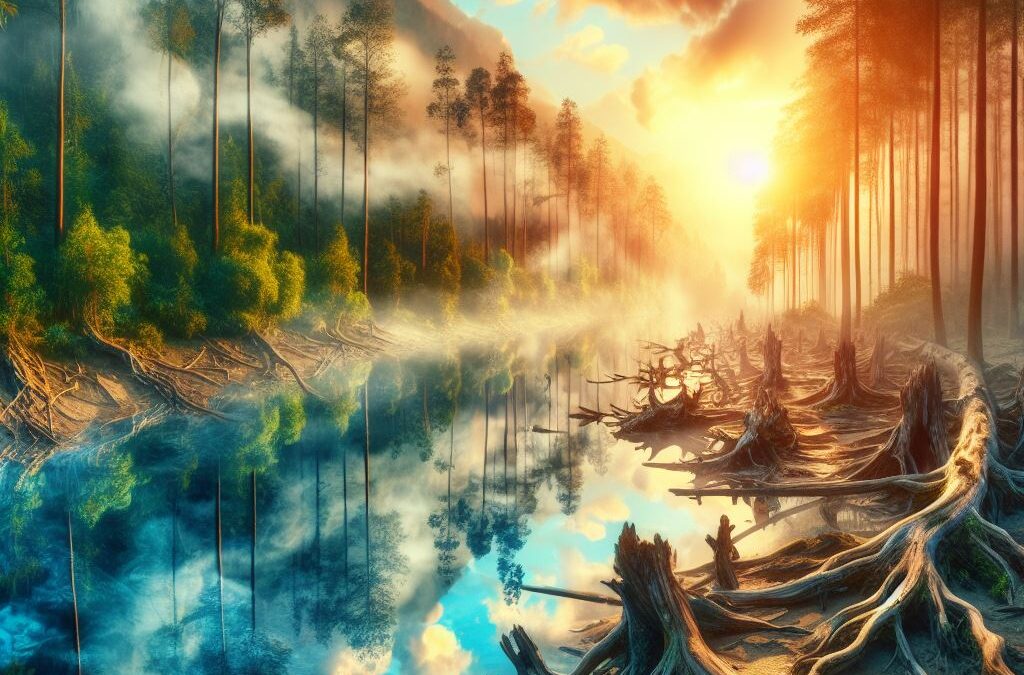In my previous blog post, What will technology be like in 30 years?, I explored what technology might be like 30 years from now. That’s an important question for my novel, The Lightning in the Collied Night, because most of the story takes place then. In this post, I’ll explore what I think Earth’s ecology / environment of the mid-21st century will be like. As I’ll explain, assumptions around what the Earth’s environment will be like then are essential to my story.
Although my first novel is (mostly) sci-fi, I’ve tried to base it on facts and current scientific thinking as much as possible. I did need to deviate from fact-based science a few times for sake of the story. Sorry about that. But hey, it IS science fiction, right? Thus my novel is based on the current scientific consensus around climate change. Over 100 years of scientific evidence shows that human activities, mainly the burning of fossil fuels, have warmed Earth’s surface and its oceans, which in turn have impacted Earth’s climate.
The environment in which the characters of my novel live is based on this consensus and on current projections on what climate change will do to our planet over the next few decades. I’ve included references in the back of my book to articles and scholarly papers that provide details on these projections, as they relate to the story. Without giving any spoilers to the plot of my book, here’s some of the assumptions I’ve made in my book about the Earth’s environment 30 years from now. You may agree or disagree with my assumptions. Please keep in mind that my book is a work of fiction, although I’ve tried to base the world of the future that it depicts on facts and scientific research whenever possible.
A key assumption I’ve made in my book regarding climate change is that the Earth’s surface and oceans will continue to grow warmer over the next 30+ years. I believe that trend will manifest itself in a number of ways. Average temperatures in many parts of the world, including the United States, will continue to increase. The increase in temperatures will continue to melt glaciers and the polar ice caps at an accelerated rate, raising ocean levels to the point where some cities will require remediation to avoid flooding. The rising temperatures will also worsen drought in many parts of the world, including parts of the United States. Also, climate change will continue to impact weather—for example, the severity and timing of severe weather, such as strong tornadoes in the dead of winter in the northern United States and increasing occurrences of “atmospheric rivers” in the Western USA.
What could be some of the downstream impacts of my assumption about rising global temperatures? There are many; I believe a few of them are: some areas of the world will become too hot (or wet, from rising ocean levels) for humans habitation, leading to millions of new refugees; much of today’s arable land will become unable to sustain crops (at least, the crops it sustains today), leading to shortages or unavailability of food products that we take for granted now; warming oceans, along with pollution and overfishing, will make fresh seafood increasingly scarce; potable water, and water for irrigation, will become more scarce in many areas of the world, threatening entire cities and even nations. And the shortages of water, arable land, and habitable land could increase tensions around the world as nations fight over access to these critical resources.
I realize that this view of what the Earth’s environment might be like 30 years from now isn’t encouraging. I hope that it turns out to be wrong. But the current scientific consensus is that this is where the Earth is headed, absent some huge changes in human behavior over the next few decades. Thus this is the world view I’ve chosen for my book. And as you’ll see when you read the book, without that kind of view, there would be no story… and no book.
